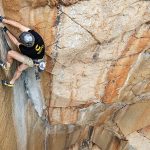The U.S. House Appropriations Committee could vote as early as Tuesday on a bill that would slash federal spending on the Land and Water Conservation Fund by 80 percent from Fiscal 2011 levels.
The House Subcommittee on Interior and the Environment Appropriations approved a Fiscal Year 2012 Interior and Environment Appropriations bill last week that proposes only $61.8 million for the LWCF. Many in the outdoor business see the move as a slap in the face to the nearly 70 members of the LWCF Coalition, which has been fighting for full LWCF funding for years. The coalition includes Outdoor Industry Association, the Sporting Goods Manufacturing Association, the International Mountain Bicycling Association and Trout Unlimited.
The proposed cuts to LWCF will impact access for sportsmen throughout the country, commented Blake Henning, vice president of Lands and Conservation at the Rocky Mountain Elk Foundation. For example, in Montana, the cuts will severely impact our Tenderfoot Creek project, which would secure access for public recreation including hunting by consolidating checkerboard land ownership in the Lewis & Clark National Forest.
The LWCF was established in 1965, when it set aside a portion of federal revenues from offshore oil and gas leases to pay for land acquisition for outdoor recreation by the National Park Service, the Bureau of Land Management, Fish and Wildlife Service and the Forest Service.
The fund has also been used by 98 percent of U.S. counties and all 50 states to build parks. During the life of the program, Congress has only appropriated about half of the $32.6 billion credited to the LWCF. In fiscal 2011, Congress cut LWCF funding by 30 percent to $300 million, or a third of the $900 million now credited to the fund annually. If approved, the pending bill would reduce LWCF funding to its lowest level in history.
That would likely kill pending deals in almost every state, where conservationists are waiting for LWCF money to pay willing-seller landowners. Among the projects that will be halted midstream are conservation efforts in the Grand Teton, Everglades, Acadia, Olympic and Glacier national parks as well as acquisition of key recreation lands from the San Bernardino National Forest to the Upper Snake/South Fork Snake River and the Sawtooth National Recreation Area to the Appalachian and Pacific Crest Trails.
We recognize that the current budget situation is forcing difficult choices on spending, but the choice to slash funding for LWCF cripples a program proven to support millions of sustainable, American jobs, said Frank Hugelmeyer, president and CEO of OIA. Chopping funding for parks, trails and greenways is a direct threat to our nations recreation infrastructure and the outdoor businesses it supports.














